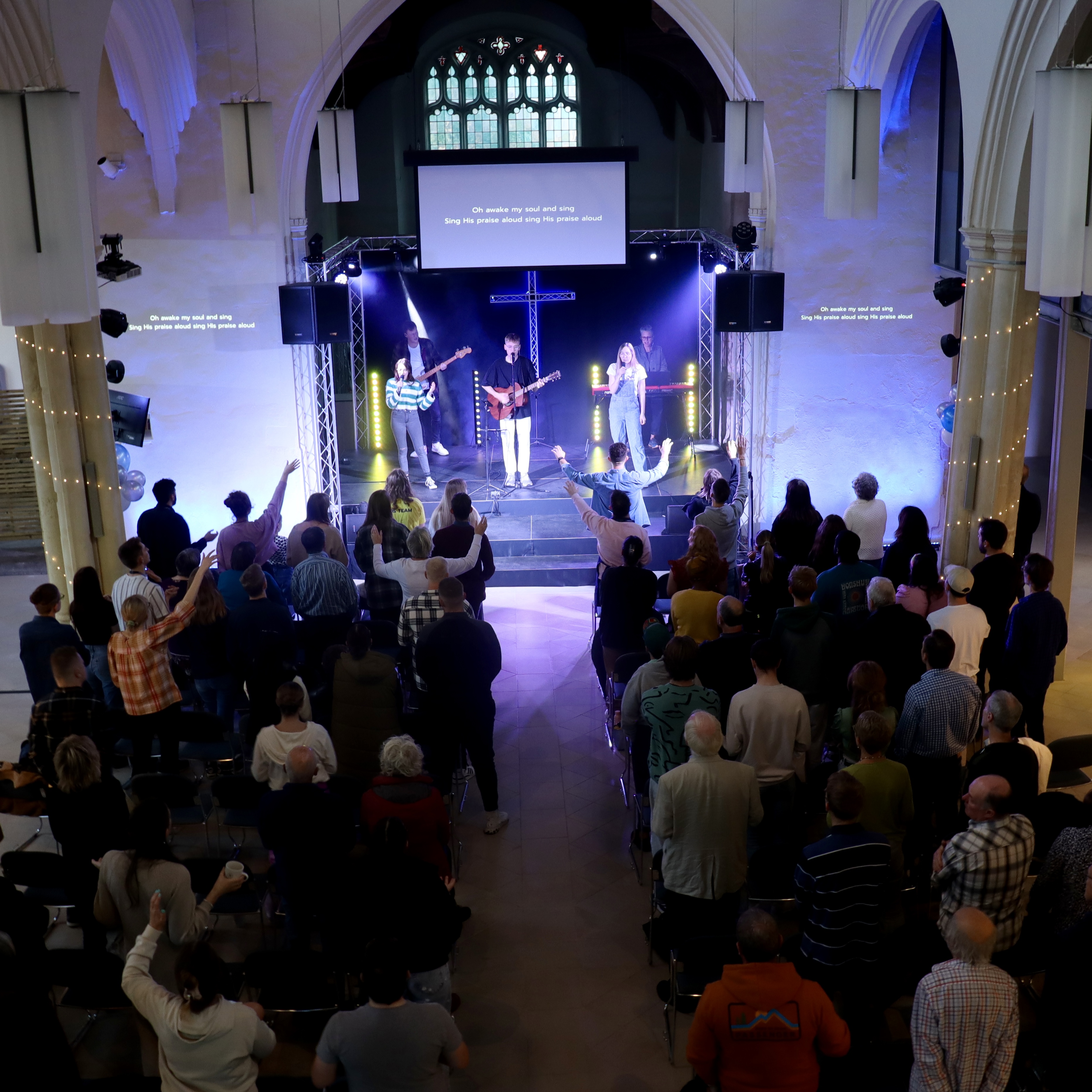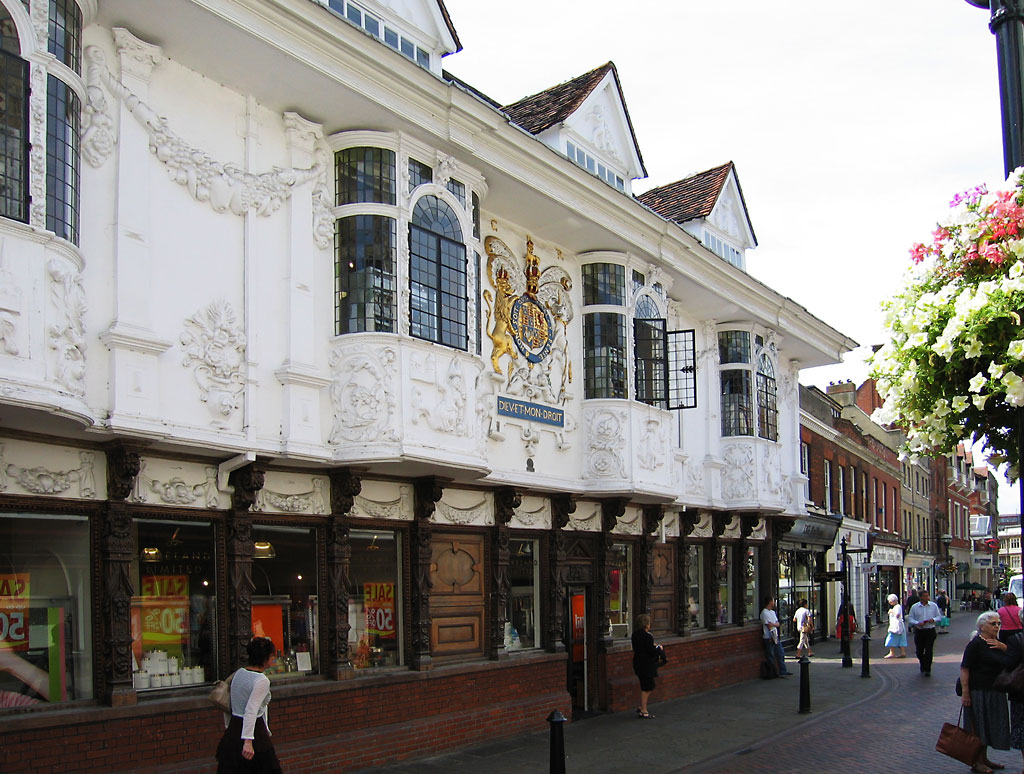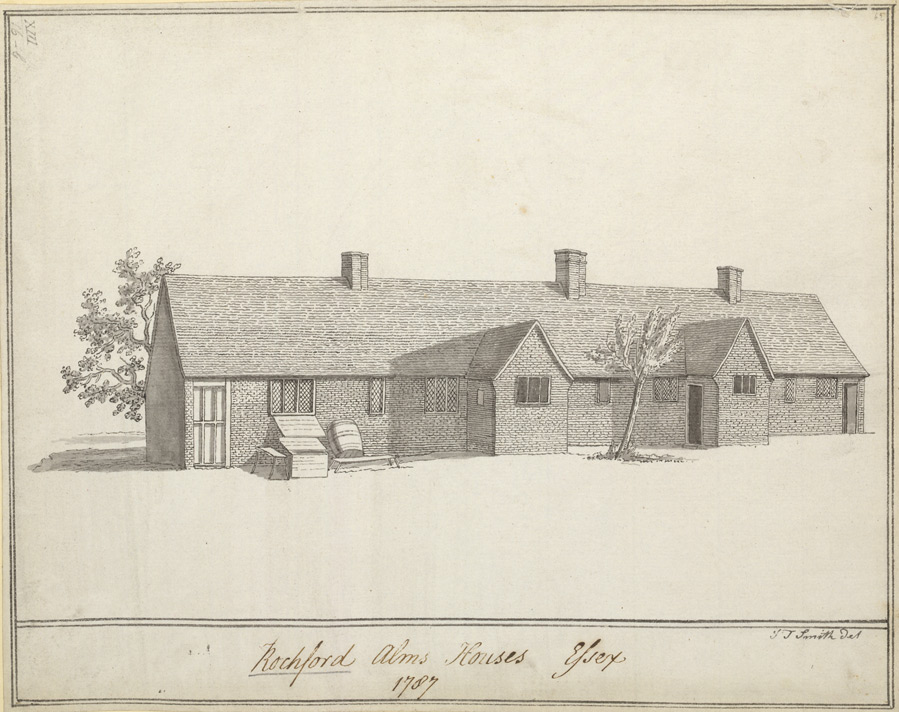|
St Mary-at-the-Quay Church, Ipswich
St Mary-at-the-Quay Church is a former Anglican church in Ipswich, Suffolk, England. The medieval building is under the care of the Churches Conservation Trust. and since September 2021 it has been used by River Church to implement an approach to evangelicism developed by Holy Trinity Brompton as part of the network of HTB church plants. The church originally served the thriving industry around the docks area of the town and those that worked there. After closing for regular worship in the 1950s the church was transferred to the CCT in 1973 and underwent a major restoration programme completing in 2016. Architecture and History The medieval church on Key Street, Ipswich was formerly known as The Key Church, and the Church of Our Lady Star of the Sea (''Stella Maris''). The church is constructed in flint with stone dressings. Its plan includes a nave with a clerestory, north and south aisles, transepts, and a west tower. The tower has diagonal buttresses decorated with flushw ... [...More Info...] [...Related Items...] OR: [Wikipedia] [Google] [Baidu] |
Ipswich
Ipswich () is a port town and Borough status in the United Kingdom, borough in Suffolk, England. It is the county town, and largest in Suffolk, followed by Lowestoft and Bury St Edmunds, and the third-largest population centre in East Anglia, after Peterborough and Norwich. It is northeast of London and in 2011 had a population of 144,957. The Ipswich built-up area is the fourth-largest in the East of England and the 42nd-largest in England and Wales. It includes the towns and villages of Kesgrave, Woodbridge, Suffolk, Woodbridge, Bramford and Martlesham Heath. Ipswich was first recorded during the medieval period as ''Gippeswic'', the town has also been recorded as ''Gyppewicus'' and ''Yppswyche''. It has been continuously inhabited since the Anglo-Saxon settlement of Britain, Saxon period, and is believed to be one of the Oldest town in Britain, oldest towns in the United Kingdom.Hills, Catherine"England's Oldest Town" Retrieved 2 August 2015. The settlement was of great eco ... [...More Info...] [...Related Items...] OR: [Wikipedia] [Google] [Baidu] |
Flushwork
In architecture, flushwork is decorative masonry work which combines on the same flat plane flint and ashlar stone. If the stone projects from a flat flint wall then the term is proudwork, as the stone stands "proud" rather than being "flush" with the wall. Flushworked buildings belong to the Perpendicular style of English Gothic architecture. It is characteristic of the external walls of medieval buildings – most of the survivors being churches – in parts of Southern England and especially East Anglia. Flushwork begins in the early 14th century, but the peak period was during the wool boom between about 1450 and the English Reformation of the 1520s, when church building virtually ceased and brick construction became more fashionable. The technique continued in occasional use, and saw a major revival in the 19th century, and is still sometimes used in a modern style today, as well as for the restoration or extension of older buildings. Technique Flushwork, and flint a ... [...More Info...] [...Related Items...] OR: [Wikipedia] [Google] [Baidu] |
Our Lady, Star Of The Sea
Our Lady, Star of the Sea is an ancient title for Mary, the mother of Jesus. The words ''Star of the Sea'' are a translation of the Latin title . The title has been in use since at least the early medieval period. Purportedly arising from a scribal error in a supposed etymology of the name ''Mary'', it came to be seen as allegorical of Mary's role as "guiding star" on the way to Christ. Under this name, the Virgin Mary is believed to intercede as a guide and protector of seafarers in particular. Many coastal churches are named or Star of the Sea. Etymology and history The name ''Stella Maris'' is first applied to the Virgin Mary in the ''Liber de Nominibus Hebraicis'', a translation by Saint Jerome of a work by Philo, but this is apparently a misnomer based on a transcription error. The Hebrew name (originally pronounced "Maryam") was rendered in Greek as ''Mariam'' (). In most manuscripts of Jerome's work, one of the interpretations offered is as "stella maris", star of ... [...More Info...] [...Related Items...] OR: [Wikipedia] [Google] [Baidu] |
Sailor
A sailor, seaman, mariner, or seafarer is a person who works aboard a watercraft as part of its crew, and may work in any one of a number of different fields that are related to the operation and maintenance of a ship. While the term ''sailor'' has its etymological roots from sailing, that is a time when sailing ships were the main mode of transport at sea, it now refers to the personnel of all watercraft regardless of the type of vessel, boat or ship. It encompasses people who operate ships professionally, be it for a military (navy) or civilian (merchant navy) or for Sailing (sport), sports or recreation. In a navy, there may be further distinctions: ''sailor'' may refer to any member of the navy even if they are based on land, while Seaman (rank), ''seaman'' may refer to a specific enlisted rank. Additionally, fisherman are seen as a distinct type of sailor, that is those engaged in fishing. Sailors have existed from the earliest periods in history as people as people used b ... [...More Info...] [...Related Items...] OR: [Wikipedia] [Google] [Baidu] |
Ipswich Docks
The Ipswich Docks, Ipswich wet dock, and the wet dock are a series of docks in the Port of Ipswich located at a bend of the River Orwell, which has been used for trade since at least the 8th Century. A wet dock was constructed in 1842, which was 'the biggest enclosed dock in the United Kingdom' at the time. A major regeneration of the area has taken place since 1999. History Economic stagnation Although Ipswich had enjoyed "a great trade" in the sixteenth century, by the seventeenth century this went into decline. This in turn had led to the neglect of basic facilities, such as the Common Quay, which was no longer accessible by vessels with a draft of 8 feet or more; such vessels had to transfer their cargoes into lighters three miles downstream at Downham Reach. Initial work . In 1837 an act of Parliament ( 7 Will. 4 & 1 Vict. c. lxxiv) allowed the Ipswich Dock Commissioners to construct a new wet dock whilst also placing certain conditions on them. In addition to building t ... [...More Info...] [...Related Items...] OR: [Wikipedia] [Google] [Baidu] |
Ipswich Museum
Ipswich Museum is a registered museum of culture, history and natural heritage, located in a Grade II* listed building on High Street in Ipswich, the county town of Suffolk. It was historically the leading regional museum in Suffolk, housing collections drawn from both the former counties of East Suffolk and West Suffolk, which were amalgamated in 1974. The original foundation of 1846, devoted primarily to Natural History, was moved to new premises in High Street in 1881. In about 1895 Christchurch Mansion, a large 16th-century house near the town centre in Christchurch Park, was given to the town. It was developed as a second venue under the same management and curatorship, devoted particularly to fine and decorative arts. Both are parts of one institution and draw on the same central core of collections. The entire service was merged with that of Colchester (Essex) on 1 April 2007 to form Colchester + Ipswich Museums. It is one of Ipswich's main features. The museum closed ... [...More Info...] [...Related Items...] OR: [Wikipedia] [Google] [Baidu] |
Almshouse
An almshouse (also known as a bede-house, poorhouse, or hospital) is charitable housing provided to people in a particular community, especially during the Middle Ages. They were often built for the poor of a locality, for those who had held certain jobs, or their widows, and for elderly people who could no longer pay rent. They are generally maintained by a charity or the trustees of a bequest. " Alms" are, in the Christian tradition, money or services donated to support the poor and indigent. Almshouses were originally formed as extensions of the church system and were later adapted by local officials and authorities. History Many almshouses are European Christian institutions though some are secular. Almshouses provide subsidised accommodation, often integrated with social care resources such as wardens. England Almshouses were established from the 10th century in Britain, to provide a place of residence for poor, old, and distressed people. They were sometimes called b ... [...More Info...] [...Related Items...] OR: [Wikipedia] [Google] [Baidu] |
Henry Tooley
Henry Tooley (d. 1551) was a Suffolk, England merchant. Alive during the Tudor period, by the time of his death he was one of the richest businessmen in the town of Ipswich. He was closely associated with the fellow merchant and Member of Parliament for Ipswich, Robert Daundy. His trade network extended Biscayan ports, the Netherlands and Iceland as well as including much of East Anglia east of line drawn between Chelmsford and Thetford – and the highly populated and industry towns of south Suffolk in particular. Early life Two locations have been put forward for the origin of his family: Corton, Suffolk or Catton, Norfolk. He was born in the last quarter of the 15th century. Traditional accounts claim he was born in the house which became the Ram Inn. He probably completed an apprenticeship, but there is no mention of him in the records until 1499 when 'Henry Toly' is mentioned occupying some land near the river in Ipswich. His biographer, John Webb, suggests that he worked a ... [...More Info...] [...Related Items...] OR: [Wikipedia] [Google] [Baidu] |
Monumental Brass
A monumental brass is a type of engraved church monument, sepulchral memorial once found through Western Europe, which in the 13th century began to partially take the place of three-dimensional church monument, monuments and effigy, effigies carved in stone or wood. Made of hard latten or sheet brass, let into the pavement, and thus forming no obstruction in the space required for the services of the church, they speedily came into general use, and continued to be a favourite style of sepulchral memorial for three centuries. In Europe Besides their great value as historical monuments, monumental brasses are interesting as authentic contemporary evidence of the varieties of armour and costume, or the peculiarities of palaeography and heraldic designs, and they are often the only authoritative records of the intricate details of family history. Although the intrinsic value of the metal has unfortunately contributed to the wholesale spoliation of these interesting monuments, they are ... [...More Info...] [...Related Items...] OR: [Wikipedia] [Google] [Baidu] |
Brantham
Brantham is a village and civil parish in the Babergh district of Suffolk, England. It is located close to the River Stour and the border with Essex, around north of Manningtree, and around southwest of Ipswich. History The name Brantham is of Old English origin - ''Brant'' for 'hill' and ''ham'' 'village' — hence, 'village on the hill'. Another possible translation may be 'burnt village', a name given after a Viking invasion coming up from the River Stour. Evidence of the village's Saxon heritage can be found in the form of some ninety silver coins from the time of Edward the Elder (899–924) in what has become known as the Brantham Hoard, found in the village in 2003. Brantham is mentioned in the Domesday Book of 1086 as having 38 households and under the lordship of Aelfric of Weinhou. Until 1887 the local economy was almost entirely agricultural. This changed in 1887 when British Xylonite Ltd. purchased the Brooklands Farm and built their factory, which was lat ... [...More Info...] [...Related Items...] OR: [Wikipedia] [Google] [Baidu] |
Baptismal Font
A baptismal font is an Church architecture, ecclesiastical architectural element, which serves as a receptacle for baptismal water used for baptism, as a part of Christian initiation for both rites of Infant baptism, infant and Believer's baptism, adult baptism. Aspersion and affusion fonts The earliest western fonts are found in the Catacombs of Rome. The fonts of many western Christian denominations that practice infant baptism are designed for baptisms using a non-immersive method, such as aspersion (sprinkling) or affusion (pouring). The simplest of these fonts has a pedestal with a holder for a basin of water. The materials vary greatly, consisting of carved and sculpted stone (including marble), wood, or metal in different shapes. Many fonts are in Octagon, octagonal shape, as a reminder of the new creation and as a connection to the Old Testament practice of circumcision, which traditionally occurs on the eighth day. Some fonts are three-sided as a reminder of the Holy T ... [...More Info...] [...Related Items...] OR: [Wikipedia] [Google] [Baidu] |
Apostles In The New Testament
In Christian theology and ecclesiology, the apostles, particularly the Twelve Apostles (also known as the Twelve Disciples or simply the Twelve), were the primary Disciple (Christianity), disciples of Jesus according to the New Testament. During the Life of Jesus in the New Testament, life and ministry of Jesus in the Christianity in the 1st century, 1st century AD, the apostles were his closest followers and became the primary teachers of the gospel message of Jesus. There is also an Eastern Christianity, Eastern Christian tradition derived from the Gospel of Luke that there were Seventy disciples, seventy apostles during the time of Jesus' ministry. The commissioning of the Twelve Apostles during the ministry of Jesus is described in the Synoptic Gospels. After his Resurrection of Jesus, resurrection, Jesus sent eleven of them (as Judas Iscariot by then had Judas Iscariot#Death, died) by the Great Commission to spread his teachings to all nations. In the Pauline epistles, ... [...More Info...] [...Related Items...] OR: [Wikipedia] [Google] [Baidu] |









